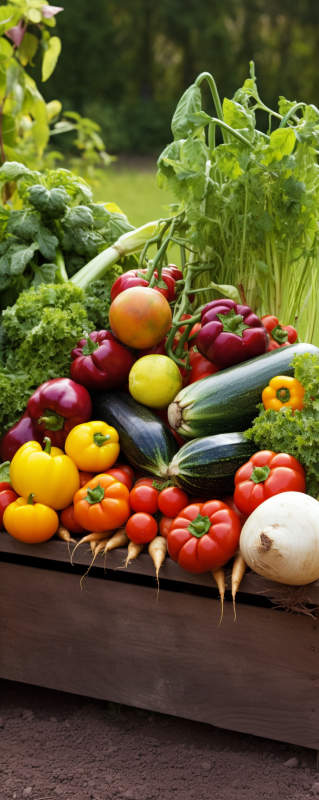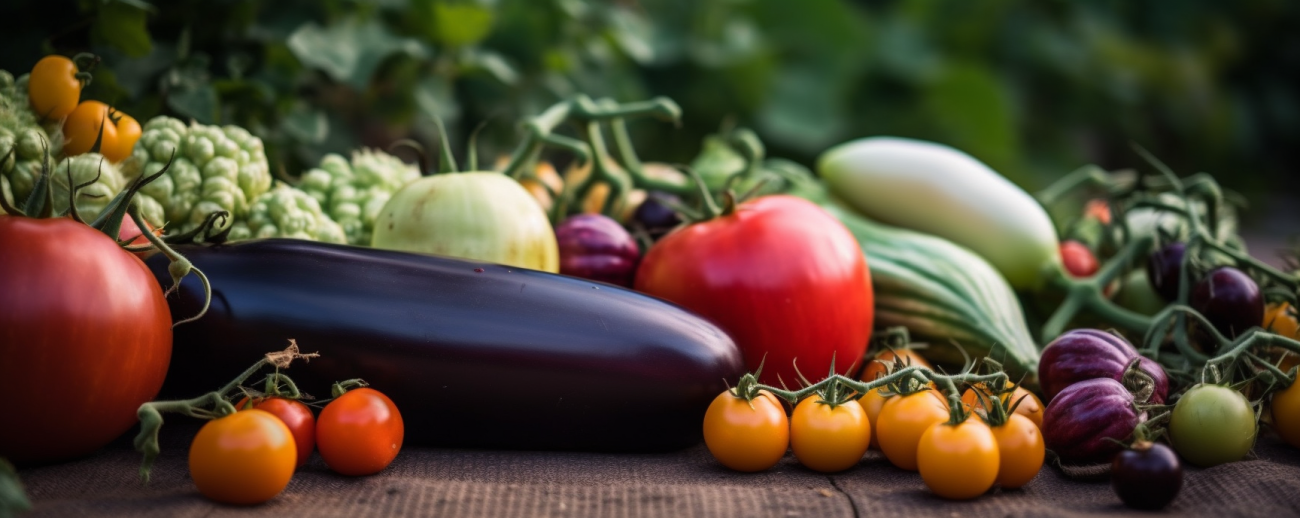Are you ready to embark on a journey of flavor and sustainability in your garden this summer? Look no further! In this article, we will explore the exciting world of heirloom seeds for planting, offering a comprehensive guide for USA gardeners. With our hand-picked selection of summer vegetables, you can transform your garden into a vibrant oasis bursting with mouthwatering goodness. So roll up your sleeves, grab your gardening tools, and let’s get started on this green adventure!
Navigating This Article:
The Beauty of Heirloom Seeds
When it comes to gardening, there is something truly magical about growing your own food. Heirloom seeds add an extra layer of enchantment to the process. These seeds have been passed down from generation to generation, preserving their unique characteristics and flavors. Unlike hybrid seeds, which are created by cross-pollinating two different varieties, heirloom seeds are open-pollinated, meaning they naturally pollinate and reproduce true to their parent plants. This ensures that the plants you grow from heirloom seeds will be authentic to their original form, bringing a touch of history and heritage to your garden.
Tips for Growing Vegetables in the Summer
Select Heat-Tolerant Varieties: When choosing heirloom seeds for your summer vegetable garden, opt for varieties that are known for their heat tolerance. These plants are adapted to withstand the hot temperatures and thrive in the summer sun. Look for varieties specifically labeled as “heat-resistant” or “heat-tolerant.”
Provide Ample Water: Summer heat can quickly dry out the soil, so it’s essential to water your vegetable garden regularly. Water deeply and evenly, ensuring that the soil remains consistently moist. Consider using a drip irrigation system or soaker hoses to deliver water directly to the plant roots, reducing evaporation.
Mulch to Retain Moisture: Mulching is a great practice to conserve soil moisture and suppress weed growth. Apply a layer of organic mulch, such as straw, wood chips, or compost, around your plants. Mulch helps retain moisture in the soil, regulates soil temperature, and reduces water evaporation.
Provide Shade and Protection: Some vegetable plants can benefit from a bit of shade during the hottest parts of the day. Consider using shade cloth or erecting temporary structures, such as shade sails or row covers, to shield plants from intense sunlight. This can help prevent wilting and heat stress.
Practice Proper Timing: Timing is crucial when it comes to summer vegetable gardening. Start your seeds indoors or sow them directly in the garden according to the recommended planting dates for your specific region. It’s important to give your plants enough time to mature before the peak heat of summer arrives.
Implement Companion Planting: Companion planting is the practice of growing certain plants together for their mutual benefit. Some companion plants can help repel pests, attract beneficial insects, or provide shade and support to neighboring vegetables. Research companion planting strategies to maximize the health and productivity of your garden.

Monitor for Pests and Diseases: Regularly inspect your plants for signs of pests or diseases, as they can become more prevalent during the summer months. Early detection and prompt action are key to preventing widespread damage. Use organic pest control methods whenever possible to protect the health of your garden.
Harvest Regularly: Summer vegetables tend to grow rapidly, so be sure to harvest them regularly. Frequent harvesting not only encourages continuous production but also prevents overripe or mature fruits that can inhibit further growth. Enjoy the fruits of your labor at their peak flavor and texture.
Keep Learning and Experimenting: Gardening is an ongoing learning process. Don’t be afraid to try new techniques, varieties, and approaches in your summer vegetable garden. Each season provides valuable insights and opportunities for experimentation, so embrace the journey and enjoy the rewards.
By following these tips, you’ll be well on your way to growing a successful summer vegetable garden with your heirloom seeds. Embrace the joys and challenges of gardening in the summer, and relish in the flavors and abundance of your homegrown harvest.
The Best Summer Vegetables for Your Garden
- Tomatoes – The crown jewel of many gardens, tomatoes are a must-have for any summer harvest. With heirloom varieties like Brandywine, Cherokee Purple, and Green Zebra, you can indulge in a rainbow of colors, shapes, and flavors. Whether you slice them for sandwiches, blend them into sauces, or simply enjoy them fresh off the vine, heirloom tomatoes will elevate your culinary creations to new heights.
- Cucumbers – Crisp, refreshing, and oh-so-versatile, cucumbers are a staple in summer salads and pickling jars. Opt for heirloom varieties like Lemon Cucumber, Boston Pickling, or Armenian Yard-Long to experience the full range of cucumber delights. From cool tzatziki dips to invigorating cucumber water, these heirlooms will keep you cool all season long.
- Squash – From zucchini to yellow crookneck, summer squash brings a touch of sunshine to your garden. With heirloom options like Pattypan, Costata Romanesco, and Delicata, you can enjoy a medley of flavors and textures. Whether you sauté them, stuff them, or bake them into delectable casseroles, heirloom squash varieties will steal the show.
- Peppers – Add a hint of heat and vibrant colors to your garden with heirloom pepper varieties. From sweet bell peppers to fiery jalapeños and habaneros, there’s a pepper for every palate. Explore heirloom options like Jimmy Nardello’s Sweet Italian, Chocolate Bhutlah, or Aji Amarillo for a thrilling taste adventure.
- Beans – Nothing beats the taste of freshly picked beans straight from the garden. With heirloom options like Kentucky Wonder, Dragon’s Tongue, and Scarlet Runner, you can savor the rich flavors and tender textures of these legumes. Whether you’re stir-frying them, steaming them, or adding them to soups and stews, heirloom beans will take your dishes to the next level.
- Eggplant – Bring a touch of elegance to your garden with heirloom eggplants. From the classic purple varieties to stunning white, striped, or miniature options, there’s an eggplant for every culinary adventure. Explore heirloom varieties like Black Beauty, Rosa Bianca, or Listada de Gandia to create mouthwatering dishes like baba ganoush, eggplant Parmesan, or grilled eggplant skewers.
- Cabbage – Cool, crisp, and packed with nutrients, heirloom cabbage varieties are a fantastic addition to any garden. From traditional green cabbage to eye-catching red and savoy varieties, there’s a cabbage to suit your taste. Try heirloom options like Golden Acre, Red Express, or Brunswick for coleslaws, stir-fries, or stuffed cabbage rolls that will leave your taste buds dancing with joy.
- Lettuce – Say goodbye to bland, store-bought lettuce and embrace the vibrant flavors of heirloom lettuce varieties. From butterhead to romaine, and everything in between, heirloom lettuces offer an explosion of taste and texture. Try varieties like Forellenschluss, Black Seeded Simpson, or Red Sails for salads that will make your garden-fresh ingredients shine.
- Herbs – Elevate your culinary creations with a selection of heirloom herbs. Basil, cilantro, dill, and parsley are just a few examples of herbs that thrive in the summer heat. The fragrance and flavor of heirloom herb varieties like Genovese Basil, Bouquet Dill, or Flat-Leaf Italian Parsley will take your dishes to new heights of deliciousness.

The Joy of Growing Your Own Summer Vegetables
Growing your own summer vegetables with heirloom seeds is not only rewarding but also comes with a multitude of benefits. Here are a few interesting facts to inspire your gardening journey:
- Flavorful Delights: Heirloom vegetables are known for their exceptional taste. Unlike some commercially grown varieties that prioritize appearance and shelf life, heirloom vegetables focus on flavor. You can indulge in a wide range of unique and vibrant flavors that will take your culinary creations to the next level.
- Preserving Biodiversity: By growing heirloom vegetables, you play a vital role in preserving biodiversity. Many heirloom varieties are rare or endangered, and cultivating them in your garden helps protect these unique genetic resources. It’s a small step towards maintaining a diverse and resilient food system.
- Connecting with History: Heirloom vegetables have a rich history that dates back centuries. Each variety often comes with a story, passed down from generation to generation. By growing heirlooms, you connect with the traditions and heritage of gardening, celebrating the legacy of those who cultivated these crops before us.
- Environmentally Friendly: Heirloom vegetables are well-suited for organic and sustainable gardening practices. They often have natural resistance to pests and diseases, reducing the need for chemical interventions. By embracing heirlooms, you can minimize your environmental footprint while enjoying a bountiful harvest.
- Flavorful Delights: Heirloom vegetables are known for their exceptional taste. Unlike some commercially grown varieties that prioritize appearance and shelf life, heirloom vegetables focus on flavor. You can indulge in a wide range of unique and vibrant flavors that will take your culinary creations to the next level.
- Preserving Biodiversity: By growing heirloom vegetables, you play a vital role in preserving biodiversity. Many heirloom varieties are rare or endangered, and cultivating them in your garden helps protect these unique genetic resources. It’s a small step towards maintaining a diverse and resilient food system.
- Connecting with History: Heirloom vegetables have a rich history that dates back centuries. Each variety often comes with a story, passed down from generation to generation. By growing heirlooms, you connect with the traditions and heritage of gardening, celebrating the legacy of those who cultivated these crops before us.
- Environmentally Friendly: Heirloom vegetables are well-suited for organic and sustainable gardening practices. They often have natural resistance to pests and diseases, reducing the need for chemical interventions. By embracing heirlooms, you can minimize your environmental footprint while enjoying a bountiful harvest.
By embracing heirloom seeds and growing your own summer vegetables, you not only enjoy the fruits of your labor but also contribute to a sustainable food system and celebrate the beauty of biodiversity. So get ready to roll up your sleeves, dig into the soil, and experience the joys of growing heirloom vegetables in your garden.

Detailed Guides for Planting Vegetables, Herbs, Greens & Lettuce, Peppers, and Wildflowers:
At FarmerValley we offer detailed guides for planting vegetables, herbs, greens & lettuce, peppers, and wildflowers. These guides provide step-by-step instructions for planting and caring for your plants, as well as tips for getting the best results. Check our growing guides and plant your own non-GMO garden with confidence.
Planting non-GMO seeds is a great way to enjoy fresh and healthy vegetables and herbs while also knowing that you’re avoiding harmful additives. With these essential tips and top lists, as well as our detailed guides, you’ll be on your way to a bountiful harvest in no time.

